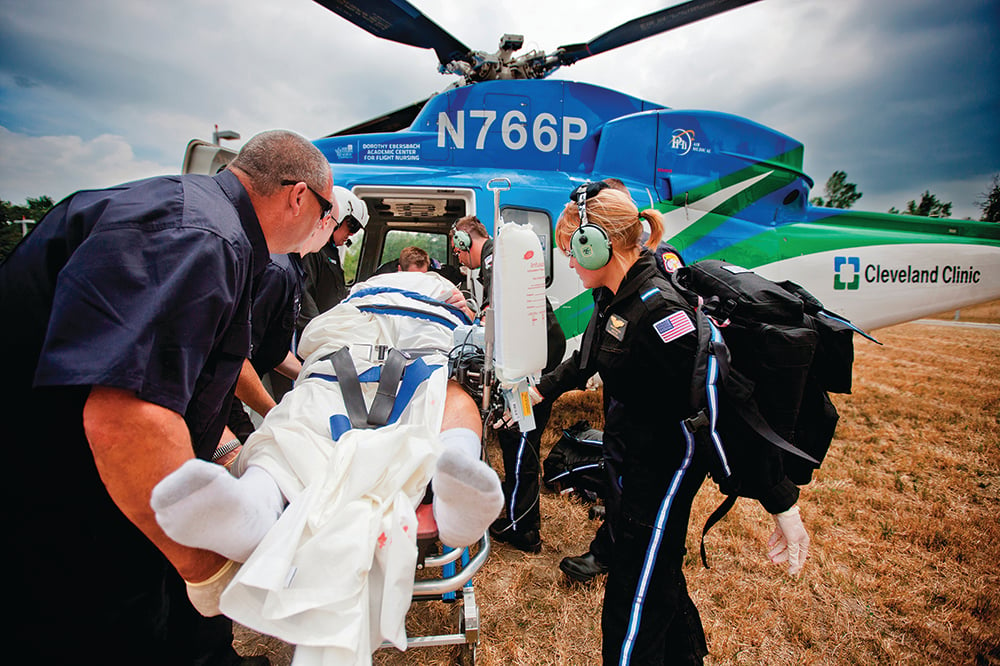COVER STORY
Medicine in Motion
By John Soeder
The CCT team prepares to airlift a patient. With helicopters, ground units and a fixed-wing jet, these caregivers provide rapid, advanced transport across Ohio and beyond.

CRITICAL CARE TRANSPORT
It begins with a call. A patient is crashing — maybe a newborn or a stroke victim or a trauma case, either somewhere within the Cleveland Clinic system or somewhere else entirely. The local team can stabilize, but the necessary care lies miles away. That’s when Cleveland Clinic’s Critical Care Transport (CCT) team springs into action. “We’re the bridge between the referring and receiving,” says Abby Brown, DNP, MBA, APRN, director of CCT and a practicing acute care nurse practitioner. “Our job is to bring Cleveland Clinic care to the patient, wherever they are, and start it early.”
The scope is vast. In 2024, the CCT team hit its highest volume ever, and 2025 is on pace to break that record. With three adult ground teams, two helicopters, a fixed-wing jet, a pediatric/neonatal team and a nationally acclaimed mobile stroke unit, CCT routinely reaches beyond state — and national — borders.
Fred Hustey, MD, CCT Medical Director and an emergency physician, says the mission is clear. “We’re really in the business of trying to move critically ill patients as quickly and safely as possible from where they are to where they need to be,” he says. “That’s everything from high-risk STEMIs [an ST-elevation myocardial infarction is a type of heart attack] to brain bleeds — things that are happening at hospitals that may not be able to offer definitive care.”
This isn’t just about speed; it’s about delivering ICU-level care in transit. Cleveland Clinic’s teams carry blood, administer clot-busting drugs and perform advanced procedures like arterial lines en route.
One breakthrough is the mobile stroke unit — one of the first in the country — which co-dispatches with EMS and can initiate treatment from the scene of the 911 call.
Equally groundbreaking is the CCT auto-launch process. When a STEMI patient arrives at a regional ED, transport is dispatched immediately, as soon as the EKG is read and before a bed is even assigned. “We’ve hit door-to-balloon times from Medina, Ohio, to main campus [a distance of approximately 30 miles] in under 90 minutes,” Dr. Hustey says, referring to the interval between a heart attack patient’s arrival at the referring facility and the inflation of a balloon in a blocked artery at the destination hospital — a critical benchmark in emergency cardiac care. “It’s extraordinary.”
As Cleveland Clinic expands, so does CCT. A new pediatric/neonatal team now serves the southern region of Northeast Ohio, and a fourth adult ground team is launching soon. Fly cars, made possible by philanthropy, allow rapid deployment of nurse practitioners to meet ground crews at bedside when helicopters aren’t feasible.
The team also prioritizes safety and ethics. Unlike some systems, Cleveland Clinic does not own or profit from its transport vehicles. “There’s never a financial incentive for air over ground,” Dr. Hustey says. “The only incentive is what’s best for the patient.”
